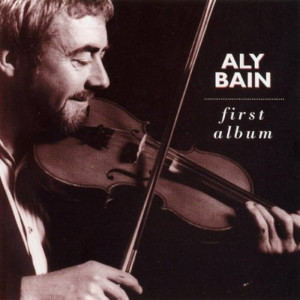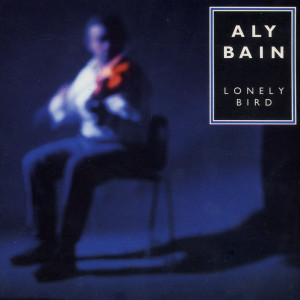 Alistair Brown wrote this review.
Alistair Brown wrote this review.
I have a vivid memory of Aly Bain at a folk festival in the 1970s. He was taking part in one of these compare and contrast workshops so common in Canadian festivals. On stage with him was a fiddler who was, well, a bit New Age in his approach. This other musician introduced a Shetland fiddle tune with a meandering tale of magic, mystery, and visitations from little people. After he had finished, Aly said, “Now I’ll play you a Shetland tune,” and off he went. For Aly Bain, the tune is the thing.
Aly Bain today is probably the nearest we have in stature to the legendary Scots fiddlers Niel Gow and the Strathspey King himself, Scott Skinner. He was born and grew up in Lerwick, and like most of his contemporaries, began playing as a boy, taking lessons from Tom Anderson, one of Shetland’s most famous fiddlers and composers of the last century. He moved to the mainland in the 1960s and with Dick Gaughan, joined Robin Morton and Cathal McConnell in The Boys of the Lough in 1968, a relationship he maintained until two years ago. During all that time Aly has always been a strong solo presence in addition to his performances in the The Boys of the Lough. He took his music to a wider audience with his presentation of “Down Home,” a television series examining fiddling traditions in Britain and Ireland and looking at similar traditions across North America. More recently he has toured regularly with Phil Cunningham and the duo has released several highly successful CDs. He has worked to encourage young Scottish musicians, and toured Scotland with a group of talented youngsters as Aly Bain and Young Champions. Selections from these concerts were later released as a recording. In 1994 he was awarded an M.B.E for services to folk music, and five years later was given the honorary Doctor of Music from the Royal Scottish Academy of Music and Drama.
 These three recordings have all been on the music shelves for some years now, and should certainly be in the library of every lover of traditional fiddle music. Taken together, they cover a wide range of material, including Shetland, Scottish, Irish, Quebecois, and U.S. traditions, a number of recent compositions, and a set of symphonic arrangements on traditional themes. Only the English get passed over! They are a fine showcase for a musician at the peak of his abilities, with all the passion, sensitivity and eclecticism that are his hallmarks.
These three recordings have all been on the music shelves for some years now, and should certainly be in the library of every lover of traditional fiddle music. Taken together, they cover a wide range of material, including Shetland, Scottish, Irish, Quebecois, and U.S. traditions, a number of recent compositions, and a set of symphonic arrangements on traditional themes. Only the English get passed over! They are a fine showcase for a musician at the peak of his abilities, with all the passion, sensitivity and eclecticism that are his hallmarks.
First Album was first released in 1984. Recorded in Shetland, it features, along with Aly, Violet Tulloch on piano and the distinctive swing guitar of Willie Johnson, along with May Gair on bass. One track has Red Clay Rambler Tommy Thompson on banjo. The repertoire includes sets from Shetland and Scotland, a Quebec set from the playing of Phillipe Bruneau, “Waiting for the Federals” from the USA, an Irish set including “The Reconciliation,” and a stunning display of virtuosity in “The Hangman’s Reel,” which audiences often demand when Aly appears in concert. Pat Shaw’s “Margaret’s Waltz,” once the most requested tune on Radio Scotland, gets an airing too.
Lonely Bird, released in 1992 on Whirlie Records and reissued in 1994 on Green Linnet, was the first recording devoted entirely to fiddle music since First Album. The recording has no unifying theme, just tunes that Aly chose because he liked them. The selections here come mainly from Shetland and Scotland, with some well known tunes from across the  Atlantic, a product of Aly’s travels and musical networks. From Jay Unger come “Midnight on the Water” and “Bonaparte’s Retreat,” from Junior Daugherty in New Mexico comes “Junior’s Waltz.” “Aly’s Waltz” is a composition from a student of Aly’s at a California fiddle school. The title track is from Finland, and was heard at a festival there.
Atlantic, a product of Aly’s travels and musical networks. From Jay Unger come “Midnight on the Water” and “Bonaparte’s Retreat,” from Junior Daugherty in New Mexico comes “Junior’s Waltz.” “Aly’s Waltz” is a composition from a student of Aly’s at a California fiddle school. The title track is from Finland, and was heard at a festival there.
Aly Bain joins the BT Scottish Ensemble in Follow the Moonstone, a bridge between classical and traditional music. As he says in his introduction, “Folk music is the root of all music,” and crossing this bridge has always interested him. The theme of the recording is music from around the North Sea, and since the fiddle is the dominant instrument of Shetland, Scotland, and Scandinavia, the fit was a natural one. The recording comprises three suites: Scandinavian, Shetland, and Scottish.
First, the Scandinavian Suite opens with “Till Far” composed by the Swedish fiddler Pers Erik Olsson, followed by the traditional Christmas carol, “Julverset.” In the same vein is “Salme,” or “psalm.” There are two contemporary compositions in this section, “Vib Ad Lib,” and “Eklindapolska.” All the tunes in “The Shetland Suite” are traditional ones, from lively old reels, “Da Aald Foula Reel” and “Winyadepla” to haunting airs like “The Day Dawn.” The set ends with the magical “Papa Stour Sword Dance.” “The Scottish Suite” is a tribute to the great fiddling traditions of the north of Scotland. Along with two Skinner classics, “The Hurricane,” and “Herr Roloff’s Farewell,” comes “Beauty of the North,” a well-known tune attributed to Simon Frazer, and a moving lament, “John Roy Lyall.”
At this point, I have to confess that I often harbour a sneaking hesitancy over collaborations of this kind, generally preferring more traditional presentations. I generally find that paper trained musicians (as Steve Hickman once notably described them) have such a different set of musical assumptions that the results are often jarring; a bit like a collaboration between Martin Carthy and Richard Dwyer-Bennett. In this case, the confluence works, mainly because it is obvious that while there is mutual respect and valuation for the two strands of music, it is Aly Bain’s concept of what these tunes are about that dominates the arrangements. The result is a sumptuous and resonant recording, and a pleasing complement to the more traditional ones available.
The two fiddle albums give the listener a very comprehensive impression of the range of talents of one of the giants of traditional fiddle music. Follow the Moonstone can only add to this reputation by revealing yet another string to the bow of Aly Bain.
(Whirlie, 1993)
(Green Linnet, 1996)
(Whirlie, 1995)
More info at the archived Phil & Aly website.
